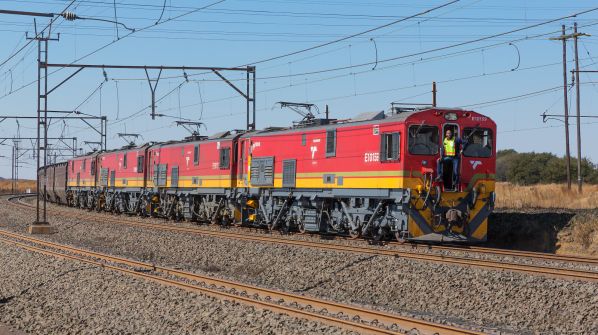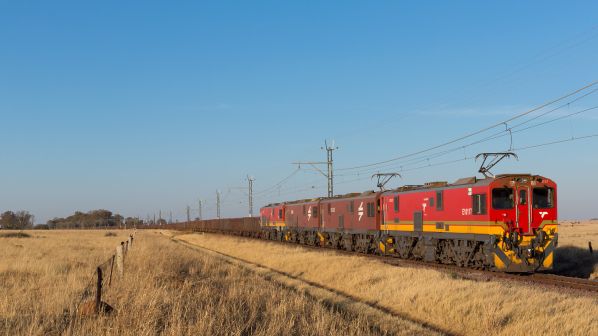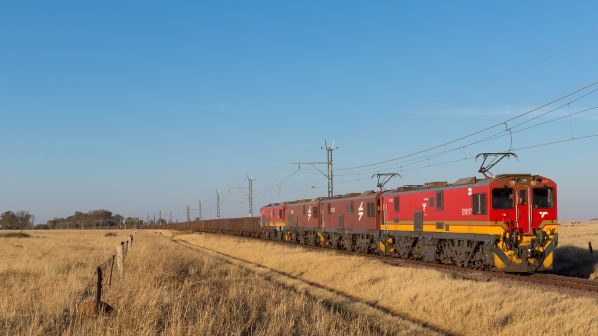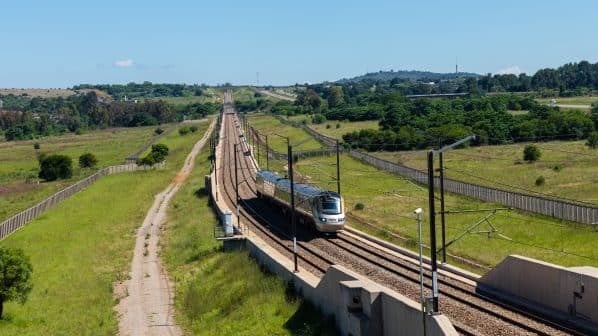THE board of South Africa’s national transport company Transnet has presented the ministers responsible for public enterprises and finance with a recovery plan to drive traffic recovery and enhance rail operations.
Under the Transnet Recovery Plan, Transnet Freight Rail will be divided into two separate divisions, Transnet Freight Rail Operating Company (TFROC) and Transnet Rail Infrastructure Manager (TRIM).
The board says that TRIM is now in place, and that commercial and operational separation from TRFOC will be completed by the end of this month.
TRIM will focus on protecting and restoring rail network capacity for commercially viable high-volume traffic, helping TFROC to deliver the highest possible tonnage for each six-month component of the plan.
At the same time, the national rail network will be opened up to third-party access by April 2024, according to the board.
The recovery plan says that operational underperformance has resulted in a significant decline in rail freight traffic. In 2017-18, Transnet carried a total of 226.3 million tonnes of freight, comprising 90.9 million tonnes of general freight, 77 million tonnes of export coal and 58.6 million tonnes of export iron ore.
However, by 2022-23 freight traffic had declined to 149.5 million tonnes, comprising 49.7 million tonnes of general freight, 48.7 million tonnes of export coal and 51.1 million tonnes of export iron ore.
Revenue has declined from Rand 72.9bn ($US 3.9bn) in 2017-18 to Rand 68.9bn in 2022-23. Over the same period, operating expenses increased from Rand 40.4bn to Rand 45.9bn, with operating profit or Ebitda falling from Rand 32.5bn or 45% of revenue to Rand 23bn or 33% of revenue.
Worsening profitability forced Transnet to increase its borrowing from Rand 123bn in 2017-18 to Rand 130bn in 2022-23, while over the same period capital investment fell from Rand 21.8bn to Rand 13.9bn.
Under the recovery plan, TFROC’s objectives will include growing freight traffic through more effective allocation of existing rolling stock and fleet optimisation, focusing on the highest-margin traffic and “low-hanging fruit.”
This will be supported by Transnet Engineering which has been set the task of delivering more effective fleet maintenance, focusing its attention on rolling stock which has greatest impact on delivering increased freight volumes. Clear targets have been set for the “timely return to service” of locomotives that are currently awaiting repair.
As infrastructure manager, TRIM will concentrate on protecting the national rail network, which has suffered from high levels of theft and vandalism in recent years. It has also been set the objective of restoring lost capacity on the commercially-viable Tier A network through an effective maintenance programme, enabling more train paths to be provided.
Efforts to improve commercial discipline will include establishing a rolling stock leasing company. Across Transnet’s rail, port and pipeline divisions, greater private-sector participation is expected to unlock growth and provide access to global best practice. There will also be a focus on the disposal of non-core assets.
Implementing the measures set out in the recovery plan is forecast to grow rail freight traffic from 149.5 million tonnes in 2022-23 to 170 million tonnes in 2023-24, and 193 million tonnes in 2024-25. This would produce revenue of Rand 85.2bn and a net profit of Rand 700m.
However, between Rand 26.7bn and Rand 28.2bn will be required in 2024-25 for the maintenance and renewal of operating equipment and assets including rail infrastructure and rolling stock.
Finance and depreciation costs are forecast to be around 35% of revenue in 2024-25 and will still “significantly erode the financial performance of Transnet,” according to the company.
Transnet has therefore asked the national treasury to provide an equity injection in order to support the recovery plan, reduce debt and achieve the required financial ratios for participation in the debt capital market.




